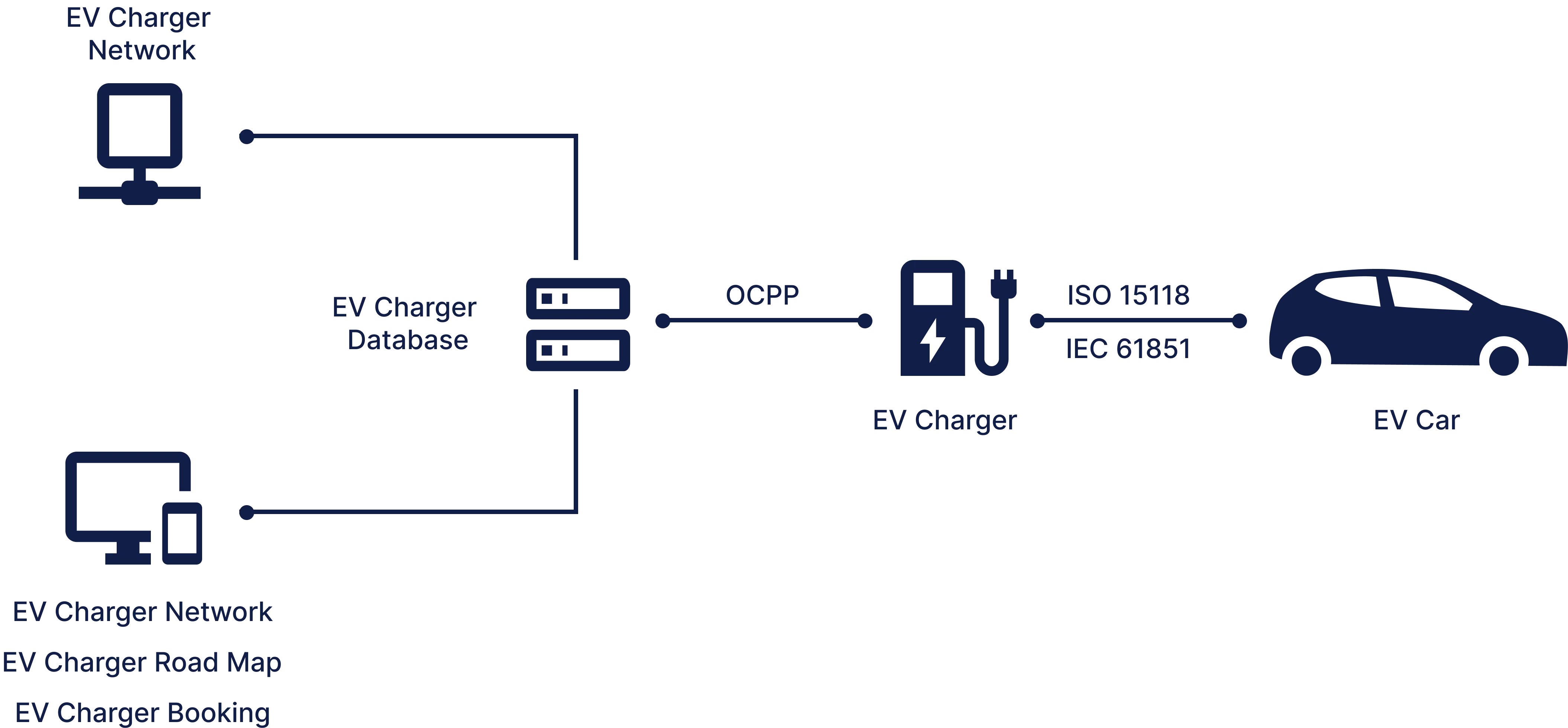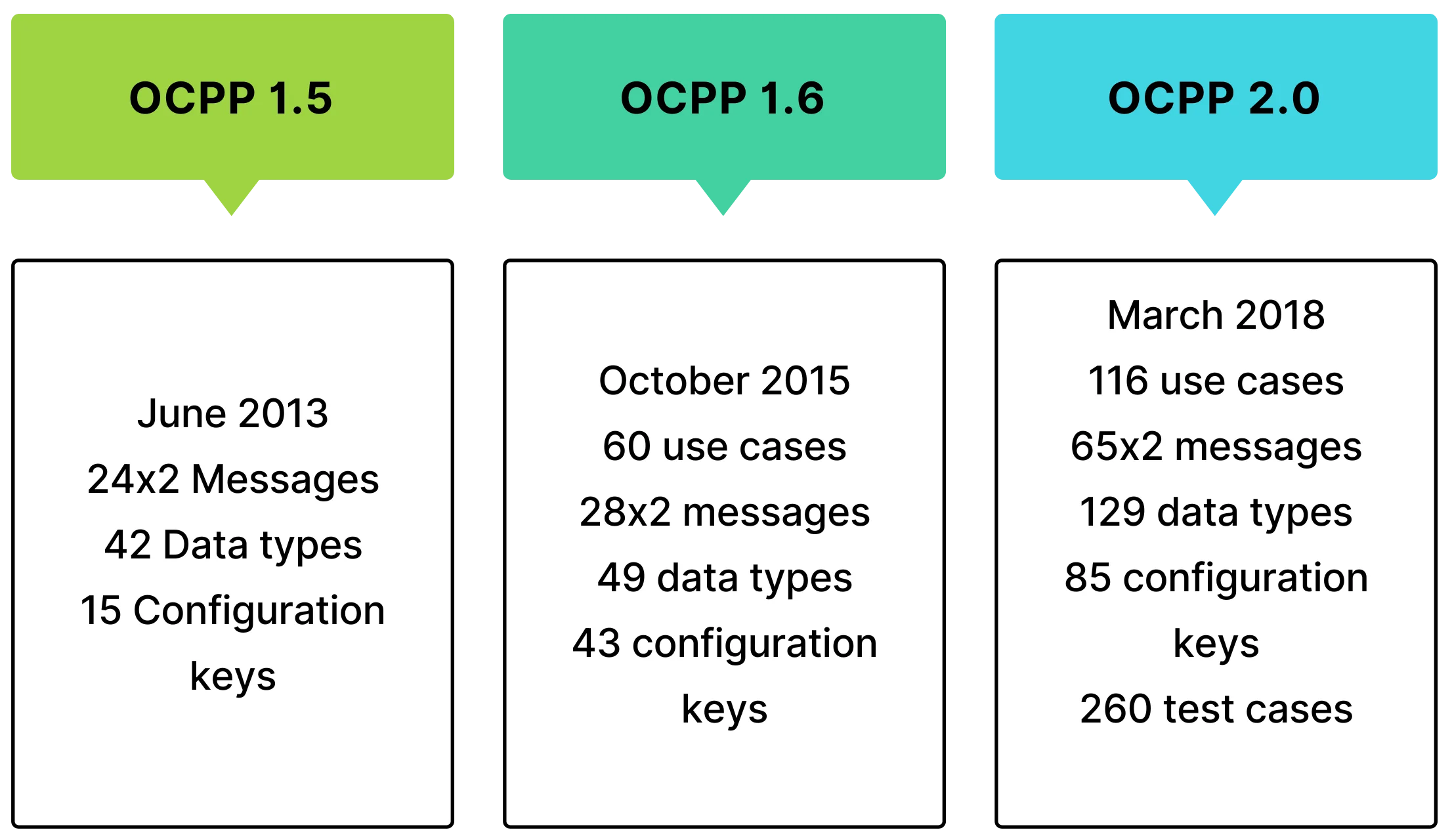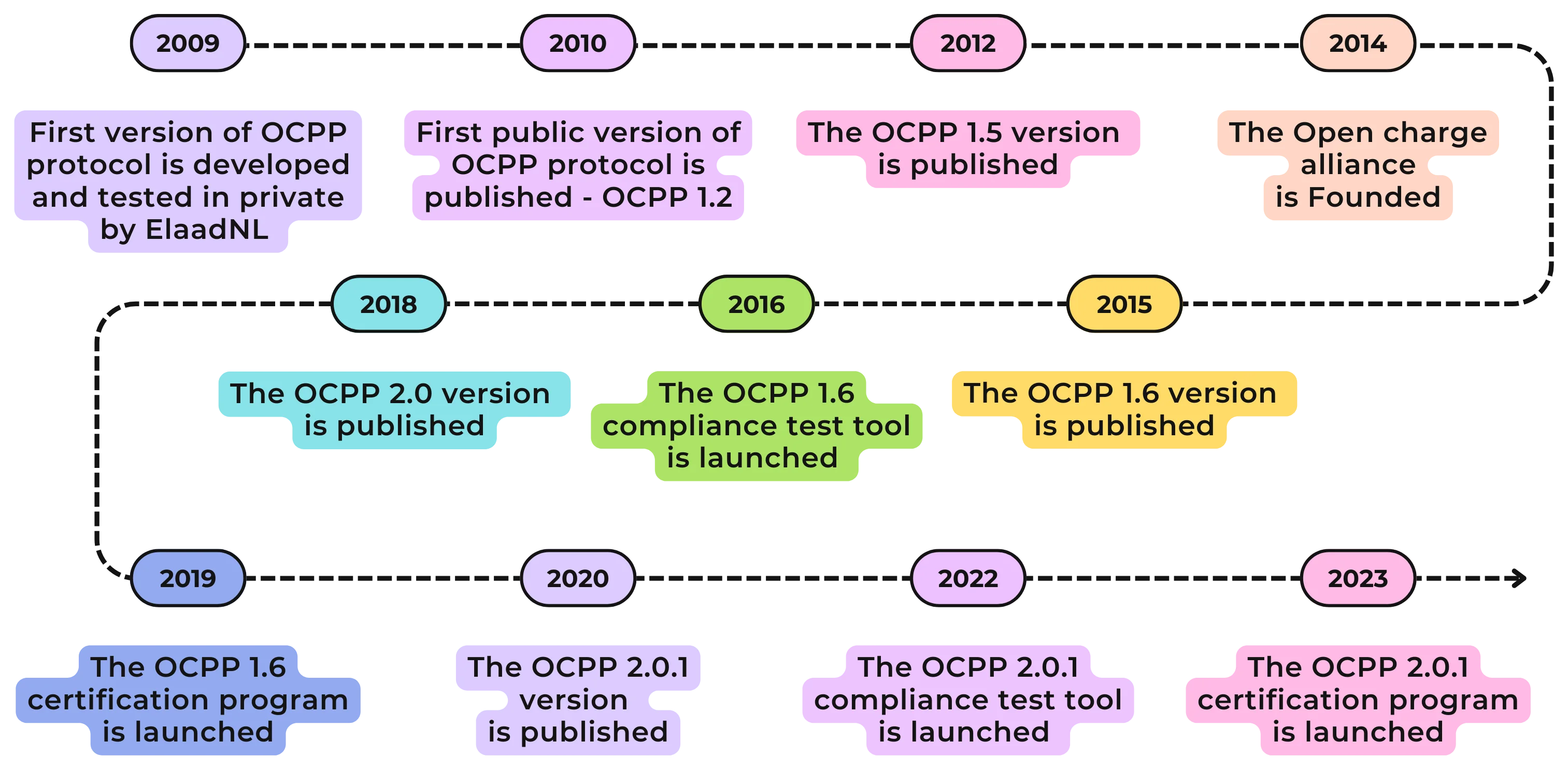OCPP EV Charging and CMS Management:
A Comprehensive Guide
Introduction
In the electric vehicle (EV) charging domain, stakeholders universally embrace the Open Charge Point Protocol (OCPP). This protocol actively defines the communication between the Central System and the Charge Point, essentially serving as the language that electric vehicle charging station management systems (CSMS) employ to communicate with connected EV charge points. This ensures seamless interaction and efficient operation within the EV charging infrastructure.
In this blog, we are going to take a deep dive into what constitutes OCPP EV charging and how it works. Additionally, we’ll discuss who might choose this technology and explore the compelling reasons behind such choices. Next, we’ll delve into the benefits of OCPP EV charging, its various types, and the key features that distinguish it. Finally, we’ll wrap up by examining the latest trends in OCPP EV charging, offering a comprehensive overview of this dynamic and evolving technology.”
Table of Contents
Revolutionize Your Charging Experience with
Our Charge Station Management System
What is OCPP?
Electric vehicle charging station management systems (CSMS) utilize OCPP to communicate with connected EV charge points. Moreover, these systems, also known as EV supply equipment (EVSE), actively manage charging sessions and enable remote diagnostics. This ensures a secure exchange of data throughout the process
It does not tie to any networking technology and supports both SOAP and JSON messaging protocols. This flexibility allows for a wide range of implementations and makes it adaptable to various network environments.
How does OCPP work?
OCPP operates on a client-server model, where the charging stations serve as clients and the central management system acts as the server. Furthermore, it facilitates real-time data exchange, status monitoring, and control of charging sessions.

As a result, this standardized communication allows an EV charging app to seamlessly integrate and manage charging stations from different vendors.
In addition to that, the interoperability achieved through OCPP enhances the user experience and promotes widespread adoption of electric vehicle charging technologies.
Who Uses OCPP Ev Charging?
A variety of entities involved in the electric vehicle (EV) charging ecosystem use OCPP.
- Electric Vehicle Charging Station Management Systems (CSMS): These systems use OCPP to communicate with connected EV charge points, also known as EV supply equipment (EVSE), to manage charging sessions and enable remote diagnostics.
- EV Charging Station Manufacturers: Manufacturers of EV charging stations use OCPP to ensure their products can communicate effectively with different CSMS.
- Charging Station Owners or Hosts: Owners of charging stations use OCPP-based networks for flexibility. If a charging station manufacturer ceases to exist, the host can switch to another OCPP-based network.
- EV Drivers: While not directly using OCPP, EV drivers benefit from the interoperability it provides, leading to a consistent charging experience across different charging stations.
- Charging Station Network Providers: These providers use OCPP to integrate different charging stations into their network, allowing them to compete on price, service, product features, and innovation.
Why Choose OCPP for Your EV Charging Management System?
Choosing OCPP has several advantages:
- Flexibility: The system provides flexibility and choice, enabling users to select from a variety of hardware and software options. Consequently, this allows users to customize their charging hardware to seamlessly integrate with a Network Management System.
- Choice: Charging stations compliant with OCPP provide users with the option to choose their charging network provider. Moreover, this flexibility enhances the user experience and encourages the extensive adoption of electric vehicles
- Interoperability: Open networks facilitate compatibility between equipment from various manufacturers. Moreover, the de-facto network protocol is widely adopted and utilized in 78 countries across every continent.
- Scalability: It is easy to change equipment and scale the system as per need.
- Reduced Vendor Lock-in: We facilitate the promotion of open development and cost-effectiveness by minimizing vendor lock-in, thereby fostering greater flexibility.
- Innovation: Driving innovation in EV charging is crucial for contributing to the creation of a sustainable future
- Increased Accessibility: Enhancing accessibility to charging infrastructure is a key outcome of the system, ensuring that electric vehicles can easily find and utilize available charging stations
- Reduced Costs for Manufacturers: The system minimizes costs for manufacturers, thereby leading to increased efficiency.
- Promotion of Competition: Encouraging competition within the EV charging industry is a key aspect of the system, fostering innovation and driving advancements in technology
Join the EV Charging Revolution Today!
How to Connect Your EV Charging Station: The Easy Way?
- Choose the Right Charging Station: Depending on your vehicle and charging needs, choose a charging station that is compatible with your EV and meets your requirements.
- Install the Charging Station: You may need a professional electrician to install the charging station at your home or workplace. Additionally, ensure you install it in a location that’s convenient for you and has the necessary electrical infrastructure.
- Register with a Charging Network: Depending on the network, you might need to download a specific app, visit a website, or alternatively, have a pre-registered RFID card.
- Connect Your Vehicle: Plug the charger into your car. Make sure you securely connect the charging cable to both the charging station and your vehicle
- Initiate the Charge: Use the app, website, or RFID card to initiate the charge. Subsequently, follow the instructions provided by the charging network to start the charging session.
- Make a Payment: If applicable, make a payment for the charging session. Users can usually do this through the app, via credit card, or with an RFID card.
Evolution of OCPP Versions and Key Features
The Open Charge Point Protocol (OCPP) has evolved significantly since its inception to address the challenges associated with charging EVs at charging stations.
Here’s a brief overview of the evolution of OCPP versions and their key features:
Key features of OCPP across versions include:

- Bi-directional Communication: The system enables bidirectional communication between charging stations and the EV charging app, allowing for seamless interaction and control.
- Device Management: The system enables charge point operators to remotely configure and monitor charging stations, providing them with efficient control and real-time insights
- Interoperability: Ensuring compatibility between various charging stations and EVs, regardless of the manufacturer, is a key feature of the system.
- Remote Management: The system empowers operators to monitor remotely, authorize access, configure hardware, update firmware, and seamlessly integrate payment and billing systems.
How does OCPP ensure security?
The Open Charge Point Protocol (OCPP) ensures security through several measures:
- End-to-End Security Design: The system establishes an end-to-end security design architecture, along with implementation guidelines for both the Charge Point and the Central Management System.
- Secure Communication: The system employs a Secure Web Socket (WSS), like HTTPS, for encrypted communication between the charging station and the management system.
Beginning with version 2.01, Transport Layer Security (TLS) encryption additionally secures the data exchanged between the endpoints. - Authentication: Ensuring the authentication of both the server and the client is a feature of the system. The charger verifies that it communicates with the correct server, and concurrently, the server authenticates the charger to prevent attackers from creating counterfeit chargers.
- Security Profiles: The system outlines three levels of security profiles, each detailing the degree of channel encryption and the methods employed for server and charger authentication.
- Security Events/Logging: The system incorporates features for security events and logging, allowing it to monitor and manage incidents related to security effectively.
- Secure Firmware Updates: The system offers a secure method for updating the firmware of charging stations.
Latest Trends in OCPP: Making EV Charging Even Better
The Open Charge Point Protocol (OCPP) continues to evolve to meet the needs of the rapidly growing electric vehicle (EV) charging industry.

OCPP 2.0.1, the latest version, enhances EV charging with faster rates, increased data sharing, and reduced power requirements. It improves transaction processing, and security, and introduces high efficiency, low latency, and lower installation costs.
Notably, the “plug and charge” feature enhances user experience, and enhanced security ensures safe communication. Overall, OCPP 2.0.1 reflects ongoing efforts to boost the efficiency, convenience, and security of EV charging.
Ready to Take Control of Your Charging Stations?
Conclusion
The Open Charge Point Protocol (OCPP) has significantly contributed to the growth and standardization of the Electric Vehicle (EV) charging infrastructure. It has enabled interoperability between different charging stations and central systems, regardless of the manufacturer. This has led to increased flexibility and choice for operators and users alike.
In conclusion, OCPP plays a pivotal role in shaping a sustainable future by facilitating a seamless and efficient EV charging experience. It stands as a testament to the power of open standards in driving technological progress.
Deprecated: implode(): Passing null to parameter #1 ($separator) of type array|string is deprecated in /var/www/html/wp-includes/category-template.php on line 1377
Tagged CMSCMSMEVEV ChargingOCPP